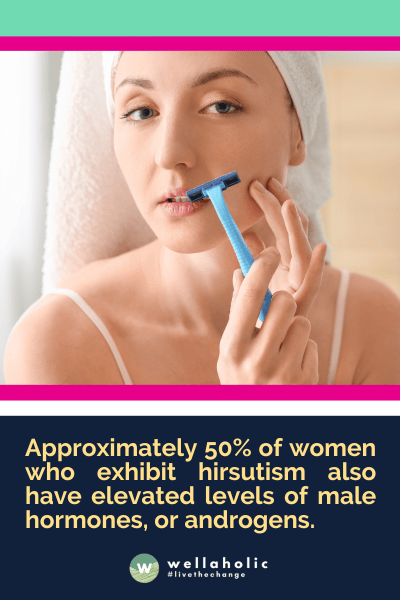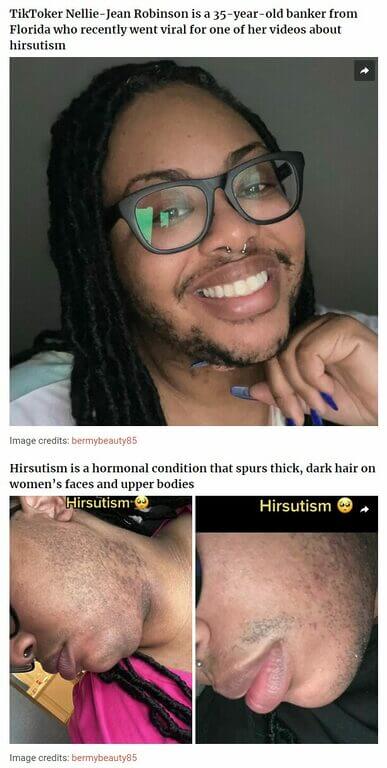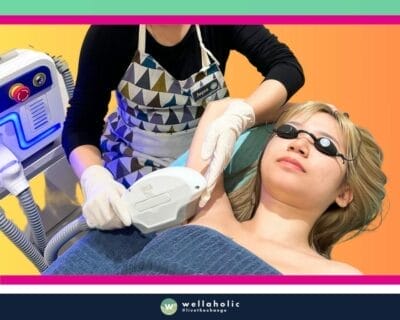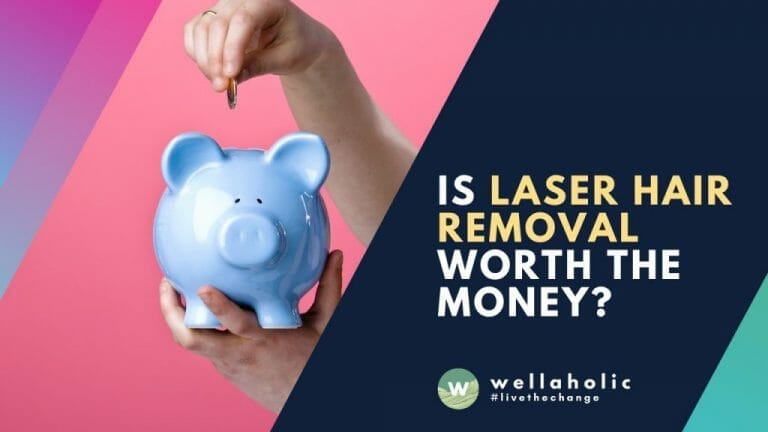
How to Deal With Excessive Hair Growth

Managing Excessive Hair Growth
Hirsutism affects many women, causing unwanted hair growth in areas like the face, chest, and back. Here’s what you need to know about managing this condition effectively.
📊 Key Facts About Hirsutism
- ✓ Losing just 5% of body weight can reduce androgen levels
- ✓ PCOS is a common underlying cause of excessive hair growth
- ✓ Medical treatments may take weeks or months to show results
- ✓ Laser treatments typically require 6-8 sessions for optimal results
- ✓ Waxing and tweezing results can last 3-6 weeks
🔍 Treatment Approaches
💊 Medical Options
- Anti-androgen medications
- Oral contraceptive pills
- Prescription hair growth inhibitors
✂️ Hair Removal
- Laser hair removal
- Electrolysis
- Waxing and depilatory methods
✨ Benefits of Professional Treatment
Long-lasting
Results that endure
Expert Care
Professional guidance
Advanced Tech
Latest treatments
Ready to address unwanted hair growth?
Our experts can help you find the right solution for your needs.
Book a Consultation Today© 2025 Wellaholic. All rights reserved.
Introduction
As founders of Wellaholic, we’ve seen many customers struggle with excessive hair growth. It’s a common issue that can affect both men and women. We understand the frustration it can cause.
At Wellaholic, we offer several solutions to tackle this problem. Our most popular treatment is SHR hair removal. It’s gentle, effective, and works on all skin types. We also provide IPL and laser hair removal options. Each method has its benefits, and we help our customers choose the best one for their needs. Our team of experts is always ready to guide you through the process. We believe in educating our customers about their options and helping them make informed decisions.
“The only way to deal with excessive hair growth is to take proactive steps to manage it.”

Understanding Hirsutism and Hypertrichosis
As an expert in the aesthetics industry, I often get questions from clients about excessive hair growth. Two conditions that frequently come up are hirsutism and hypertrichosis. While both involve unwanted hair, there are some key differences to be aware of.
Hirsutism refers specifically to women developing coarse, dark hair growth in male-pattern areas like the face, chest, and abdomen.[1][2] This is caused by an excess of male hormones called androgens. The most common underlying cause is polycystic ovary syndrome (PCOS), but other hormonal imbalances or medical conditions like tumours can also lead to hirsutism.
On the other hand, hypertrichosis is simply excessive hair growth anywhere on the body in both men and women.[3] It’s not necessarily related to hormones – it can be caused by genetics, medications, nutritional issues, or other medical problems. The hair tends to be finer and lighter in colour compared to hirsutism.
So in simple terms, hirsutism in women is about male-pattern hair growth driven by androgens, while hypertrichosis is a more general excessive hair condition that can affect anyone.
Tailored Treatments for Hirsutism and Hypertrichosis
At Wellaholic, we have treatments tailored for both hirsutism and hypertrichosis. For hirsutism, we often recommend medications to address the underlying hormonal imbalance along with laser hair removal. With hypertrichosis, the focus is more on cosmetic hair removal methods since there’s no hormonal factor.
The key is getting an accurate diagnosis first. I always have my clients come in for an evaluation, so we can determine if it’s hirsutism, hypertrichosis, or something else before developing a personalized treatment plan. Proper management makes a big difference in boosting confidence and improving quality of life.

Understanding Excessive Hair Growth Symptoms
As founders of Wellaholic, we’ve seen many customers struggle with excessive hair growth. It’s a common concern that affects both men and women. We’ve noticed that some people mistake normal hair growth for excessive hair growth. Let’s clear that up.
Excessive hair growth, also known as hirsutism, is more than just having a lot of hair. It’s when thick, dark hair grows in areas where it’s not typical. For women, this might be on the face, chest, or back. Men might notice hair growing in unusual patterns or at a rapid rate. At Wellaholic, we’ve helped many customers manage this condition. We always recommend a proper diagnosis from a doctor before starting any treatment. Our role is to provide effective hair removal solutions once the underlying cause is addressed.

Negative Experiences for Excessive Hair Growth
Many women struggle with the emotional and psychological impacts of excessive hair growth, especially in areas like the face, chest and back. This condition, known as hirsutism, is often caused by hormonal imbalances like polycystic ovary syndrome (PCOS).
Client Experiences
- Tana Anderson was relentlessly bullied as a child for her excessive hair growth, being called names like “dog legs” and “monkey arms”. She felt like a “freak of nature” and was deeply embarrassed.[1] After years of trying temporary hair removal methods, she finally found a permanent solution through electrolysis.
- Megan Stewart experienced PCOS-induced hirsutism, with excessive dark hair growth on her face, neck and other areas. This led to self-consciousness and having to constantly remove the hair. After trying laser hair removal, she says it has been “a blessing” and she no longer has to worry about visible hair growth.[2]
- Many women with hirsutism report feeling embarrassed, ashamed and distressed about their appearance. The excessive hair growth can severely impact self-confidence and quality of life.[6]
- Nellie-Jean Robinson used her TikTok platform to raise awareness about her experience with hirsutism, in hopes of reducing stigma around the condition for women of colour. [20]
The emotional toll of hirsutism is significant, with many women reporting depression, anxiety, low self-esteem and poor body image as a result of excessive hair growth.[6] Having a strong support system and access to effective treatment options is crucial for improving the psychological well-being of those affected.

What are the Treatments for Excessive Hair Growth?
As someone with over a decade of experience in aesthetics, I frequently get questions from clients about dealing with unwanted hair growth. For women with hirsutism – excessive coarse hair in male-pattern areas like the face, chest and abdomen – it’s often caused by hormonal imbalances like polycystic ovary syndrome (PCOS).
At Wellaholic, our first step is to have the client come in for an evaluation. We use a standardized scale to assess the degree of hair growth and determine if it constitutes clinical hirsutism. From there, we can explore potential underlying hormonal causes through testing.
Combating Hirsutism: Medications and Hair Removal Techniques
For hirsutism cases, we typically recommend a combined approach. Medications like birth control pills or anti-androgens can help suppress the excess male hormones driving the hair growth. These are used alongside laser hair removal or electrolysis to permanently reduce the existing coarse hairs.
With hypertrichosis – generalized excessive hair growth not tied to hormones – the treatment focuses more on cosmetic hair removal methods like laser, electrolysis, waxing or depilatories. There’s no need for medications since it’s not a hormonal issue. We usually recommend our SHR hair removal, which works well for cases related to hypertrichosis (with good results).
No matter the type of unwanted hair, I always emphasize managing client expectations. Hirsutism in particular requires patience, as it can take 6–9 months to see full results from hormonal treatments. But sticking with the proper regimen makes a big difference in boosting confidence and improving quality of life.

Are there medications to treat excessive hair growth?
For hirsutism caused by high androgen levels, we commonly recommend medications to help lower those male hormones. The most popular is spironolactone, which blocks androgen receptors and reduces testosterone production. It can be very effective, though side effects like menstrual irregularities and breast tenderness sometimes occur.
Birth control pills are another first-line option, as they contain estrogen and progestin to suppress ovarian androgen secretion. We’ll often combine the pill with spironolactone or another anti-androgen for an enhanced effect.
Finasteride is a newer medication that inhibits the conversion of testosterone to its more potent form, dihydrotestosterone. With minimal side effects, it’s become one of my preferred choices for hirsutism patients.
Other drugs like eflornithine cream can be used to slow facial hair growth specifically. Or for severe cases, injectable medications like Lupron may be needed to fully shut down the ovaries.
No matter which route we take, I always emphasize managing expectations with hirsutism treatment. Even with medications, it can take 6–9 months to see the full benefits as those coarse hairs complete their growth cycle. Sticking with the proper regimen is key, but the payoff in terms of confidence and quality of life makes it worth the patience.

Conclusion
In conclusion, dealing with excessive hair growth involves understanding the condition, recognizing its symptoms, and exploring various treatment options. Medications can be effective, but they require patience and consistent use. Side effects are possible, and individual responses to treatment can vary. Therefore, it’s crucial to consult with a healthcare professional for personalized advice.
Remember, every person’s experience with excessive hair growth is unique, and what works for one might not work for another. It’s all about finding the right balance and treatment plan that works for you, helping you to manage the condition and live your life confidently and comfortably. If you need further assistance with excessive hair growth, feel free to arrange an appointment with Wellaholic for a free consultation.
Frequently Asked Questions (FAQ)
What is the most effective way to deal with excessive hair growth?
A: Laser hair removal is widely considered the most effective method for dealing with excessive hair growth. It offers a permanent solution by targeting hair follicles with precision.
How does laser hair removal work?
A: Laser hair removal uses concentrated beams of light to target hair follicles, inhibiting their ability to regrow hair. The treatment is safe and minimally invasive, providing long-lasting results.
Is laser hair removal suitable for all skin types?
A: Yes, laser hair removal is suitable for various skin types, including darker skin tones. Modern technologies like those used at Wellaholic ensure safe and effective treatment for a wide range of individuals.
Why is laser hair removal considered a permanent solution?
A: Laser hair removal offers a permanent reduction in hair growth. While it may require multiple sessions to achieve the desired results, many individuals experience long-lasting hair reduction after completing the recommended treatment course.
Can laser hair removal effectively address excessive hair growth on large areas of the body?
A: Yes, laser hair removal is efficient for treating larger areas such as the legs, back, and chest. Its precision and speed make it a practical choice for dealing with excessive hair growth on various body parts.
Is laser hair removal painful?
A: Laser hair removal is generally well-tolerated, with most individuals experiencing minimal discomfort. Some modern systems incorporate cooling technology to enhance the comfort of the treatment.

Serene Chiam, Aesthetic Director (LinkedIn)
Serene Chiam, the Aesthetic Director at Wellaholic in Singapore, is a highly skilled and experienced professional in the field of laser hair removal. With over a decade of expertise in the aesthetics industry, including her previous role as a Clinical Aesthetics Manager with Laser Clinics Australia, Serene brings a wealth of knowledge and practical experience to her position. Her CIDESCO certificate in skin care and Bachelor of Health Science (Aesthetics) from Torrens University of Australia further demonstrate her commitment to excellence in the field. Serene’s deep understanding of IPL hair removal, SHR hair removal, and the unique considerations for pregnant clients has been crucial in establishing Wellaholic as a trusted provider of safe and effective treatments in Singapore.
Contact Serene at [email protected]
GET IN TOUCH
Book Now Pay Later

SHR Permanent Hair Removal with Unlimited Shots
- ⭐ Diode Laser Technology. Developed by Alma Lasers, SHR combines 755nm, 808nm and 1064nm laser wavelengths to target all skin types.
- ⭐ Unbeatable in Value and Quality. Wellaholic’s SHR Unlimited Plans offer a hair removal solution that is unbeatable in both value and quality.
- ⭐ One Price for All Body Parts. Pay just one low price for a complete hair removal experience for all body parts, including unlimited SHR shots.
- ⭐ Permanent Fuss-Free Solution. Say goodbye to the hassle of expensive and ineffective hair removal methods and trust WellaSmooth 3X to deliver a permanent and fuss-free solution for all your hair removal needs.
- ⭐ Award-Winning. Wellaholic’s treatments have been recognized by top beauty publications such as Daily Vanity, Beauty Insider, and Tropika Club Magazine.
- ⭐ Over 2000 Verified Customer Reviews. Wellaholic has over 30 industry awards and over 2000 positive reviews from customers, and >50% are repeat customers.








